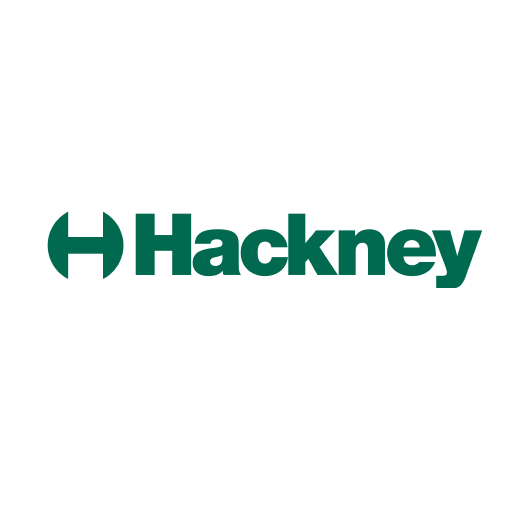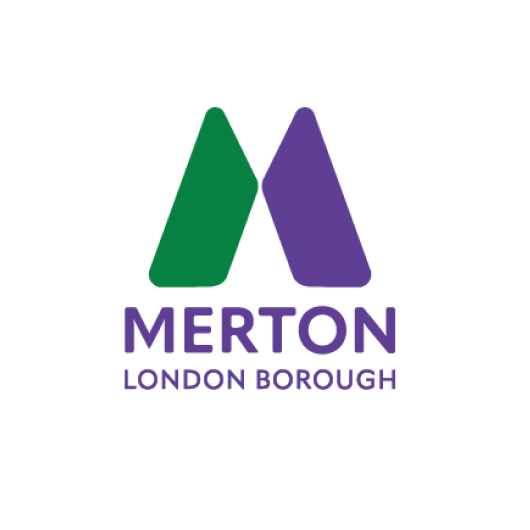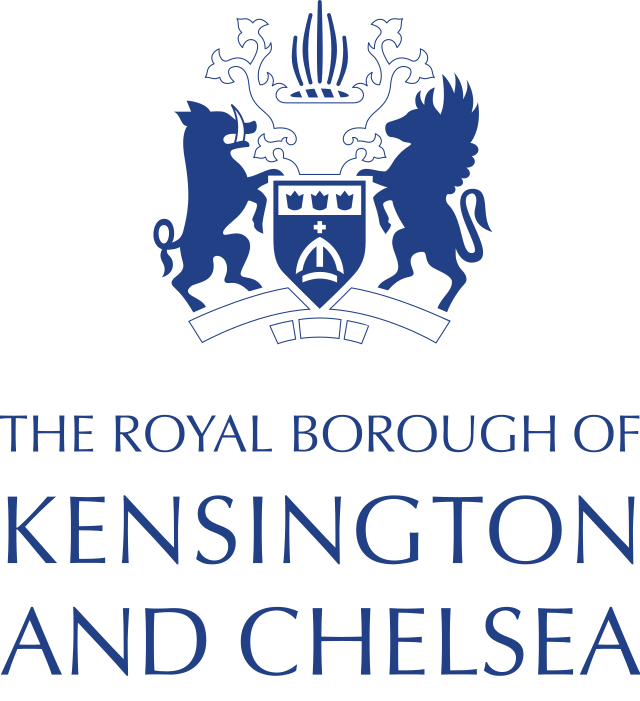Dear councillors and council officers,
Want to kickstart a behaviour change movement in your neighbourhoods?
Support residents with the cost-of-living crisis
Meet your net zero goals and reduce waste to landfill
Work with our award-winning social enterprise to start a sharing library with your community
Join 18+ other councils in partnering with us to enable more sustainable, empowered communities


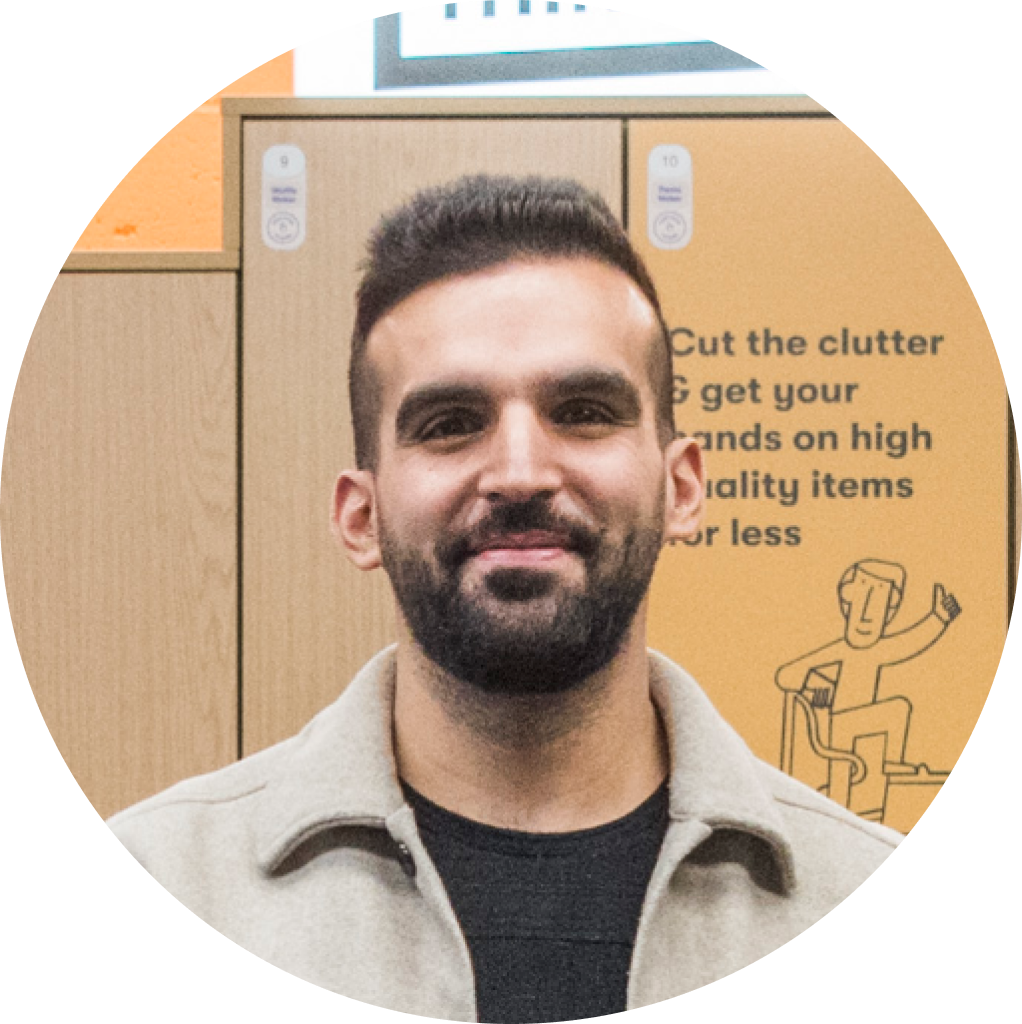
“Library of Things helps us achieve our net zero goals in a visible way, and helps our residents with the cost-of-living crisis”
Cllr Mete Coban, Hackney Council
Watch Library of Things in action
We're on a mission to make borrowing better than buying for people & planet. We partner with councils & communities to start & sustain sharing libraries across UK & Europe. We're building infrastructure & a platform for the movement. More below!
Choosing the right model
Different models work for different neighbourhoods.
Whichever model you choose, as a council, you need to play a hands-on enabling role to make it a success. Here are some models we know and love from around the UK:
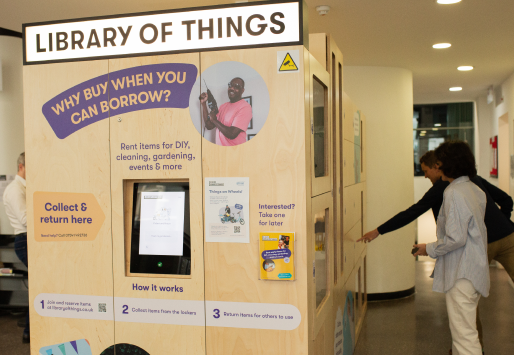
The self-service locker
Example: London Library of Things
In a nutshell: Self-serve lockers in a library, reuse hub, shopping centre... Option to have volunteer hosts at busy times.
How it works: Watch London video here
Benefits:
• Helps local people save money, waste & emissions
• Convenient & accessible to many through longer opening hours = larger reach
• Brings footfall to libraries
• Only needs ~6sqm space
• Good for cities & larger towns.
Challenges: Needs funding upfront to get started. Members with lower digital confidence can need extra support (eg. by host venue staff or telephone support).
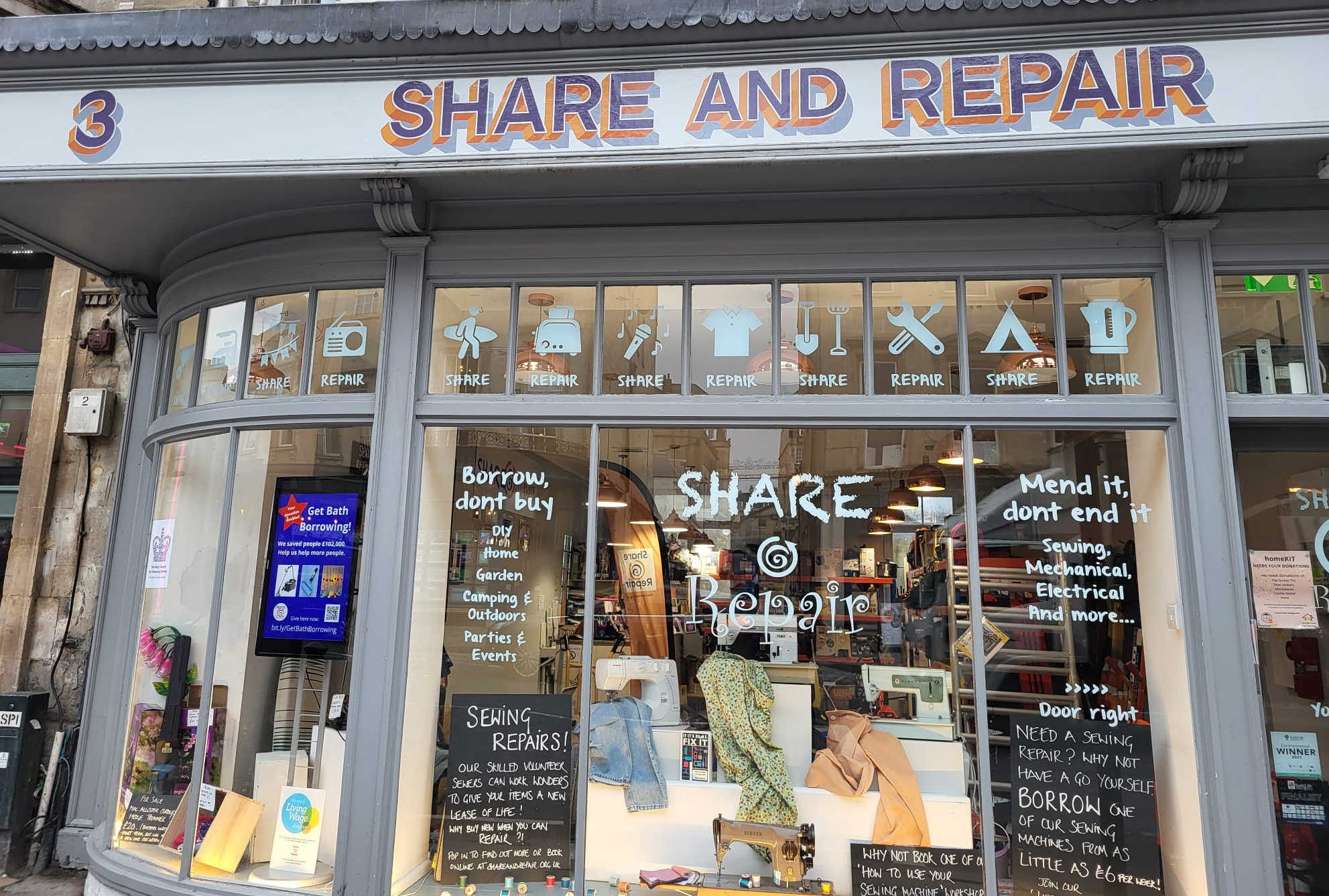
Combined share & repair/DIY hub
Examples: Share & Repair Bath, Re:Make Newport, Edinburgh Tool Library
In a nutshell: A large space housing a sharing library alongside a repair shop and/or makerspace.
How it works: Watch Bath video here, read about Edinburgh here
Benefits:
• Helps local people save money, waste & emissions
• Lots of opportunities for skills-sharing, volunteering & wider local impact
• Multiple uses = diversified income & resilience
Challenges: Needs affordable space & funding upfront to get started. Tends to need ongoing funding or sponsorship to support in-depth skills programmes.
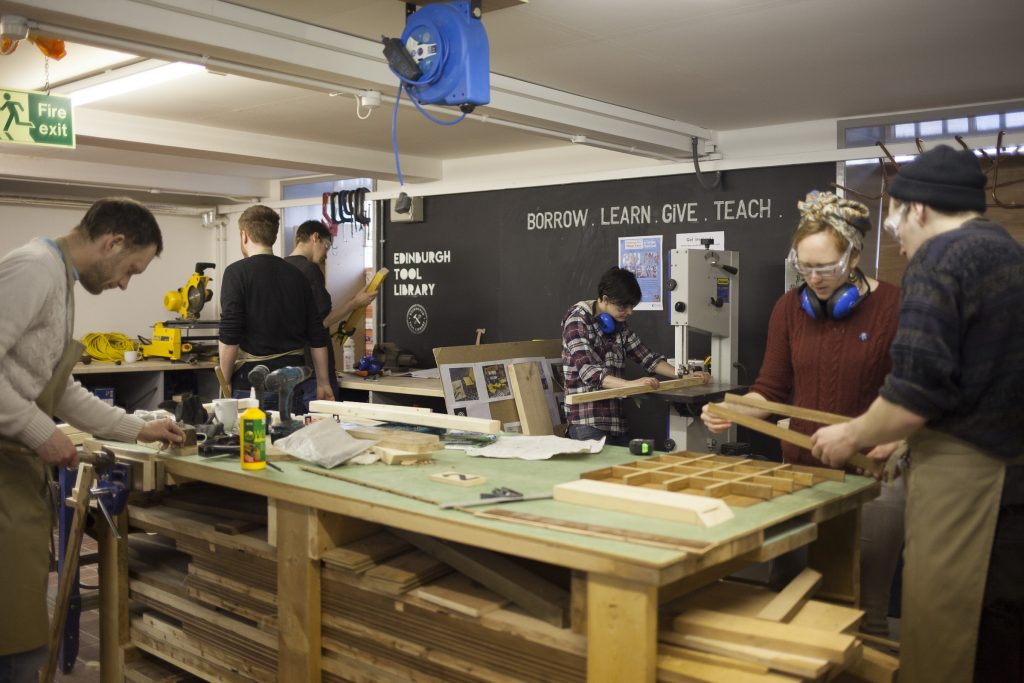
The share shed or shop
Examples: Share Shed (Devon), Share Bristol, Letchworth Garden Shed, Kernow LoT
In a nutshell: A shop or shed (can be mobile) with donated items, often all-volunteer-run or hybrid grant-funded, typically open 2-3 times per week.
How it works: Read about Share Bristol here
Benefits:
• Helps local people save money, waste & emissions
• Relatively easy and cheap to get started
• Opportunities for skills-sharing & volunteering
• Good for towns, rural areas and places with active volunteer networks.
Challenges: Opening hours often limited to 2-3 slots per week due to need for grant funding and finding volunteers. Can be hard to sustain if volunteer shortage or burnout
We acknowledge that in some close-knit neighbourhoods and smaller villages where people own many of their own tools, a Whatsapp group for neighbours is all that's needed!
Partnering with us
We partner with councils and communities to help you start and sustain your own sharing library.
Whichever model you choose, you can use our platform to access:
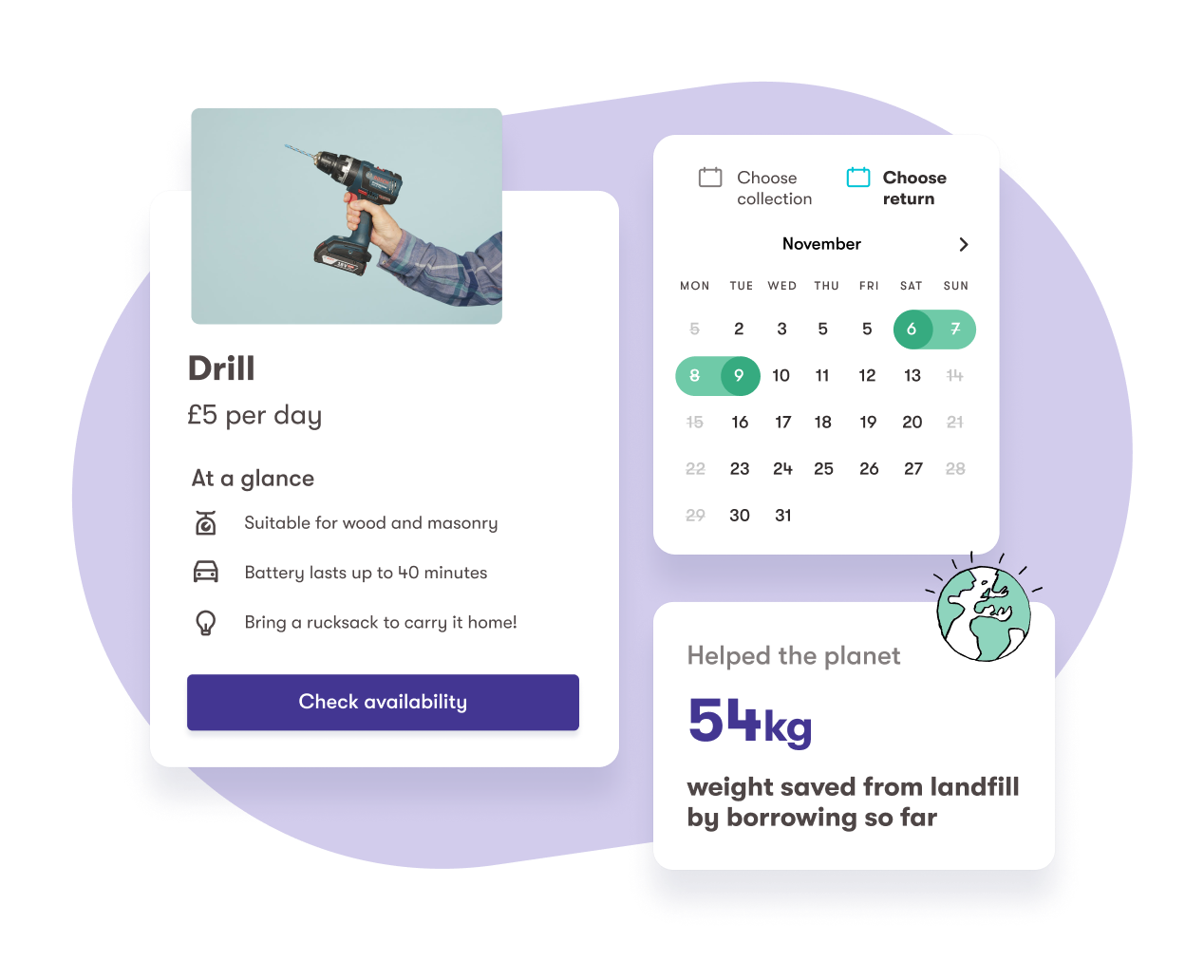
User-friendly software that integrates flexibly with staffed spaces, lockers or home delivery.
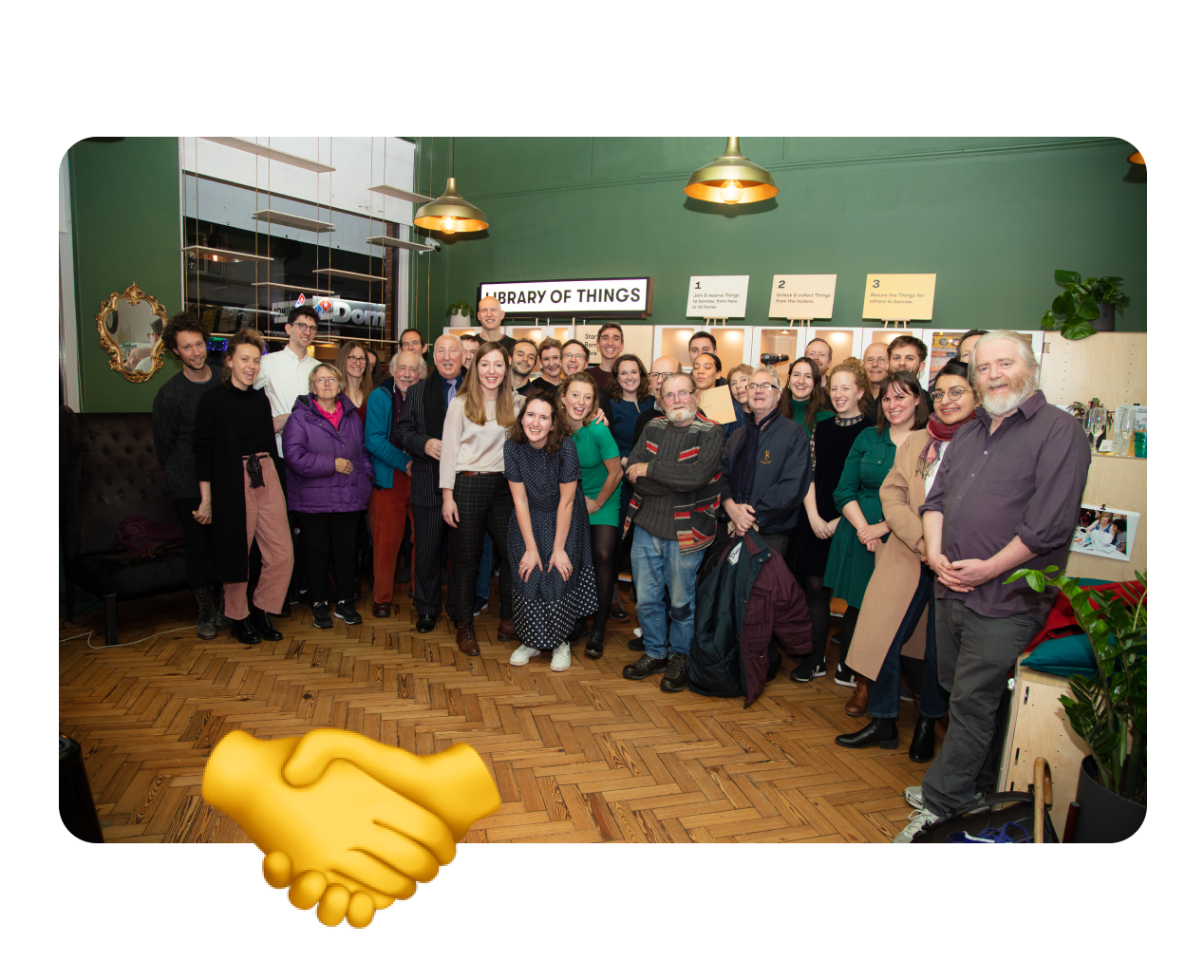
Help to partner with communities, funders, landlords...
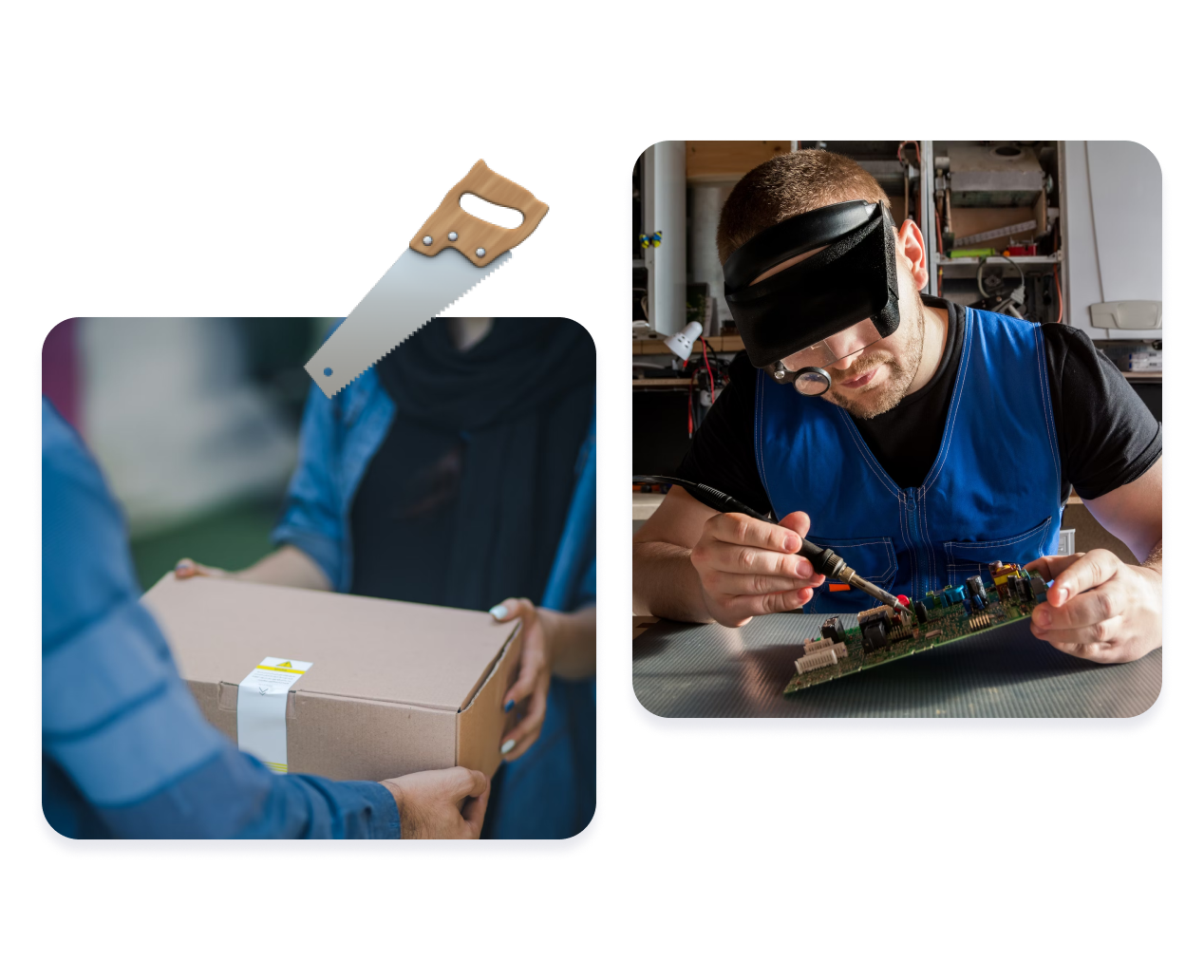
A ready-made supply chain of quality Things, how-to guides & maintenance knowhow
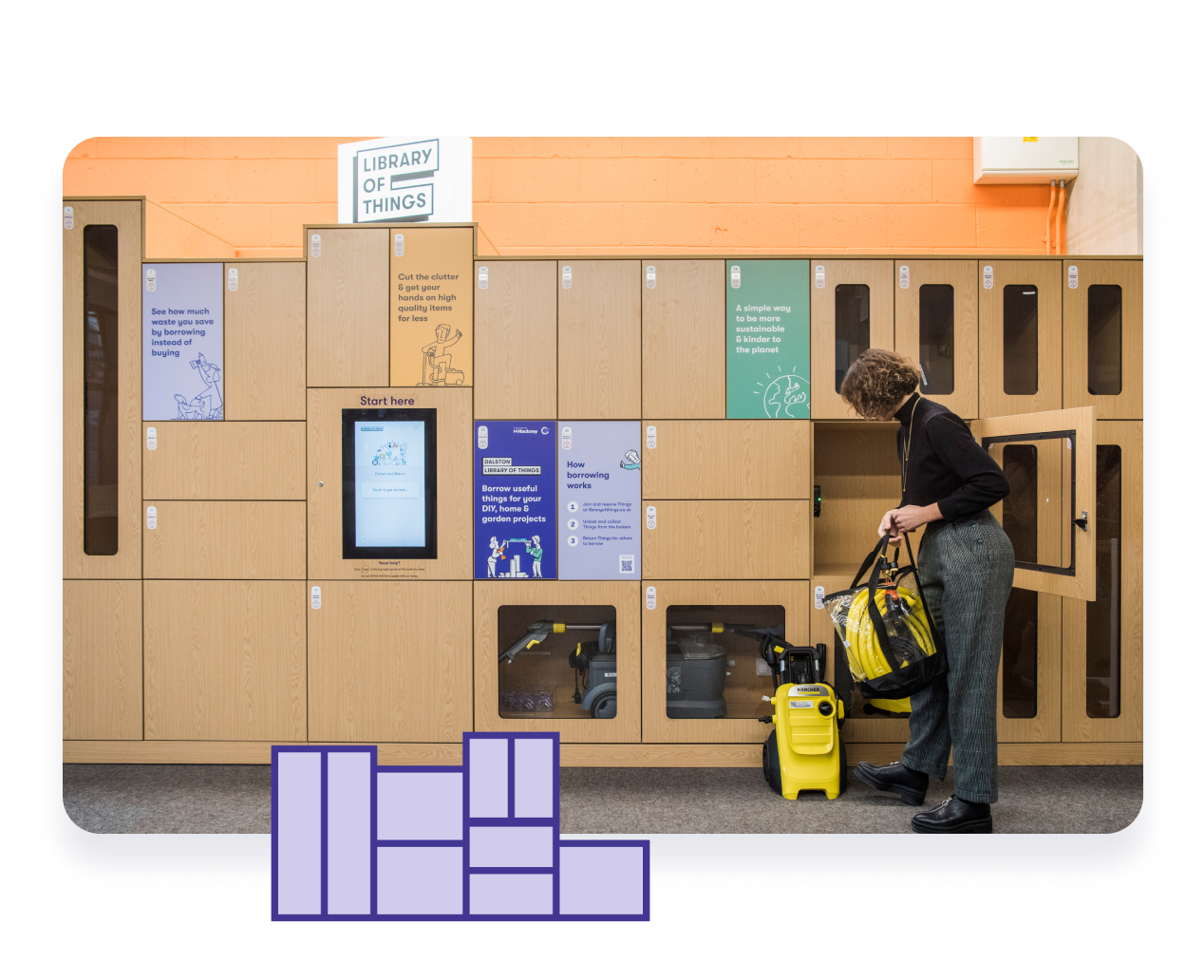
Self-serve locker co-design, sourcing & install if needed
Software includes:
📣 Tools for local movement-building 📊 Impact measurement & reporting dashboards
📓 Operational systems – like how-to guides, maintenance wikis 💬 Thing sourcing systems, SMS reminders…
Pricing
You can just use our software to power your sharing library. Or you can order ready-made lockers integrated with our software (either branded & operated by you or by us).
📦 You operate
Choose a self-branded kiosk, stocked & serviced by you
💜 We operate
A Library of Things branded kiosk, stocked & serviced by us

Software only
(can power any model – whether share shop, lockers, mobile...)
📦 Talk to us

10 Lockers
📦 £7.5k upfront
£100 per month
💜 £9-11k upfront
£450 per month

20 Lockers
📦 £11k upfront
£150 p/m
💜 £15-17k upfront
£750 p/m

30 Lockers
📦 £14k upfront
£200 p/m
💜 £20-22k upfront
£1000 p/m

Custom
📦 Talk to us
💜 Talk to us
Please note! Prices are indicative only and are subject to change based on individual requirements like the types of Things and costs of materials. If in doubt, just get in touch.
For London-based local authorities, our prices are higher because we offer a) a broader set of items and lockers b) a much more hands-on behaviour change launch campaign and ongoing service.
Discounts are available if the sharing library is started & operated by a community group – see the Community Organisations page.
to discuss your requirements with our team & place an order
I want ready-made lockers! What next?
1. Find a home for it
Locker-based Libraries of Things work well inside high footfall, publicly accessible spaces like libraries, shopping centres, coworking spaces, reuse hubs and other community venues. Look for:
• Opening hours spanning 6+ days per week
• Rent-free space
• Enough space to house the locker without blocking fire exits or walkways when in use
• Space for a technician to do maintenance once or twice per week
Read our full recommended criteria here.
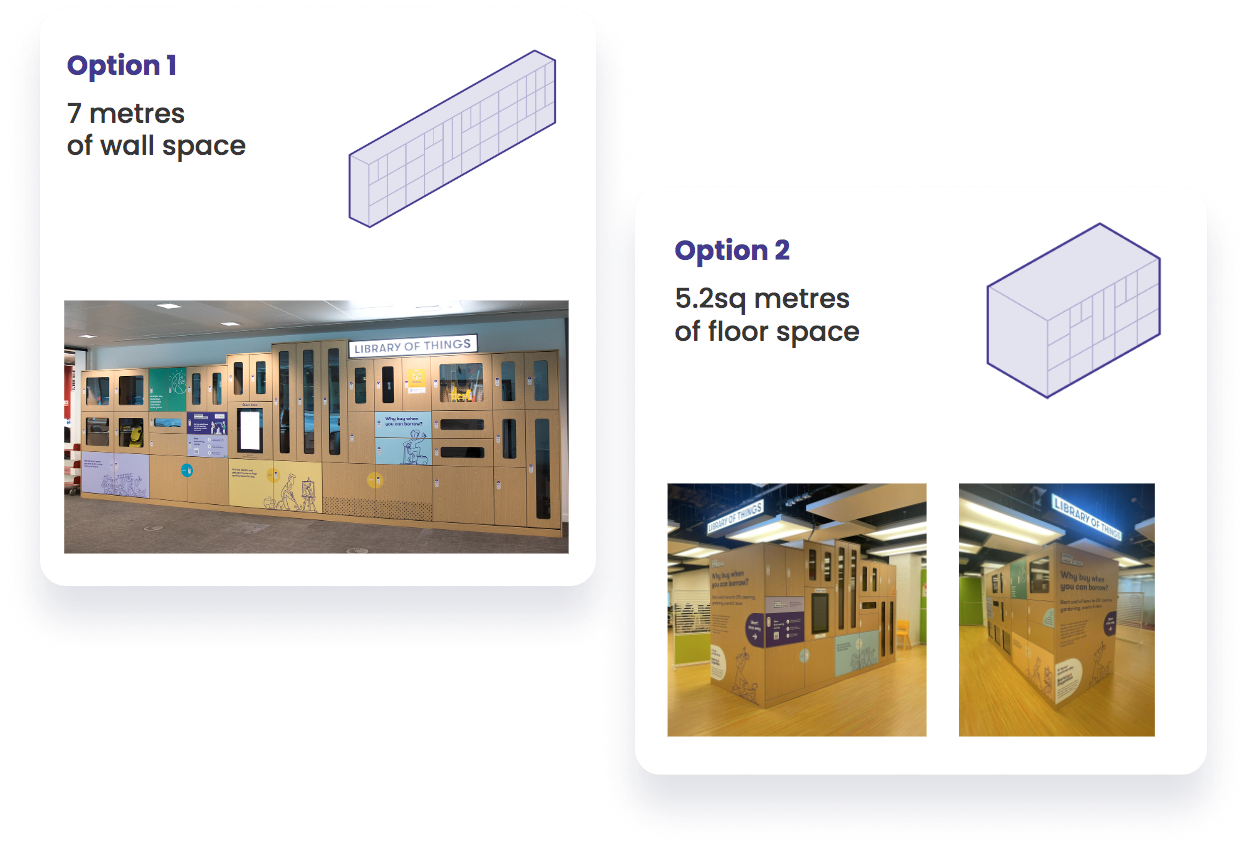
2. Test & grow local demand
A Library of Things is successful if it’s regularly used and supported by local people.
To test local demand before you invest in a Library of Things:
📣 Start a campaign using our campaign tool here and gather 250+ expressions of interest from local people
🎤 Hold a community assembly or series of workshops to build relationships and support
📈 Once up and running, you will need to promote the service regularly to ensure ongoing usage
3. Raise funds for it
Here are some tried and tested fundraising options:
Grants – like National Lottery Community Fund’s Awards for All (up to £20,000)
Local crowdfunding campaign – Crowdfunder offers a range of match-funding options
Councils – some councils have available budget in their climate, sustainability and waste teams, libraries capital budgets, CIL funds, or local grant-funding programmes. We recommend having a conversation with a councillor or senior officer working in climate and/or sustainability to see if they’re supportive of this initiative.
Impact you could have
Every day, our platform powers dozens of item rental locations – saving money for thousands of people, and preventing hundreds of tonnes of waste and emissions through purchase prevention and wider behaviour change.
Here’s the impact you could have in one neighbourhood every year (data is based on one of our locations, Hammersmith Library of Things):
👋 2000+ people
borrowing not buying
🔌 15 tonnes
electrical products reused
💰£280,000
saved by members
👛 84%
people say they save money through Library of Things
😊 67%
feel more proud of & better connected to their neighbourhood.
PLUS new jobs, training & volunteer opportunities, more footfall to high streets and community hubs, greater pride of place & a stronger local circular economy
